Dream of swimming with whales is a desire that many people have, as these majestic creatures captivate our imagination and evoke a sense of awe and wonder. There is nothing quite like the incredible thrill of being in the presence of these magnificent beings in the water. Picture the surge of energy as you plunge into the sea and discover yourself gliding alongside the most immense creatures on the planet. It is an undeniably exceptional and breathtaking adventure that will create enduring memories for years to come.
The Unforgettable Journey: Fulfilling the Dream of Swimming with Whales
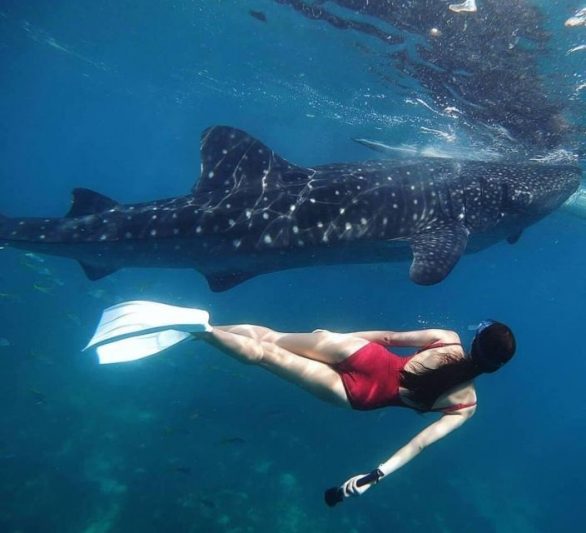
Understanding Whale Watching: What You Need to Know
Before embarking on a whale watching adventure, it is important to have a basic understanding of what to expect. To maximize your whale-watching experience, take the time to learn about the diverse species of cetaceans that call the region home. This includes humpback whales, orcas, and blue whales, each with their distinct characteristics and behaviors. By doing so, you’ll be able to accurately identify and appreciate the magnificent creatures you encounter, making your adventure even more enjoyable and memorable.
Choosing the right location for whale watching is crucial. Some of the best places in the world for whale watching include Alaska, Hawaii, Iceland, and Mexico. These locations offer optimal conditions for spotting whales due to their proximity to migration routes or feeding grounds. Additionally, it is important to engage in responsible whale watching practices to ensure the well-being of these magnificent creatures.
Choosing the Right Time and Place for Whale Watching
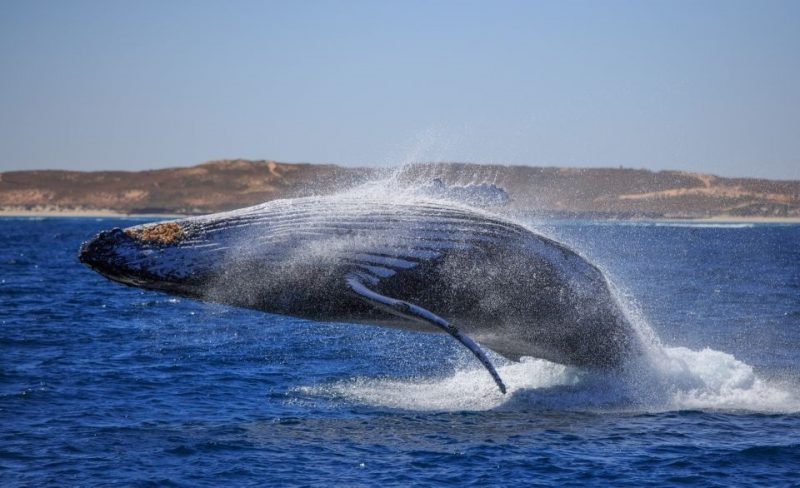
Timing is everything when it comes to whale watching. Different seasons offer different opportunities for spotting whales. For example, in Alaska, the best time to see humpback whales is during the summer months when they migrate to feed in the nutrient-rich waters. Understanding the migration patterns and behaviors of whales will increase your chances of having a successful encounter.
Weather conditions also play a significant role in whale watching. Calm seas and clear skies are ideal for spotting whales as they surface and breach. Windy or stormy weather can make it difficult to see them from a distance. It is essential to research the weather patterns of your chosen destination before booking a tour to ensure optimal conditions for whale watching.
Preparing for Your Whale Watching Adventure: What to Pack
| Item | Description |
|---|---|
| Binoculars | For a closer look at the whales and other marine life |
| Camera | To capture the amazing sights and memories |
| Sunscreen | To protect your skin from the sun’s harmful rays |
| Sunglasses | To reduce glare and protect your eyes from the sun |
| Warm clothing | Even on a sunny day, it can get chilly out on the water |
| Waterproof jacket | In case of rain or splashing waves |
| Snacks and water | To keep you hydrated and energized during the trip |
| Sea sickness medication | In case you are prone to motion sickness |
When preparing for a whale watching trip, there are several essential items that you should pack. Firstly, it is important to bring sunscreen and a hat to protect yourself from the sun’s rays, as you may spend several hours out on the water. Additionally, a waterproof camera or binoculars will allow you to capture the incredible moments you encounter during your tour.
Clothing recommendations for whale watching include layering your clothing to accommodate changing weather conditions. It is advisable to wear a warm base layer, followed by a waterproof and windproof outer layer. Comfortable and non-slip shoes are also recommended to ensure stability on the boat.
Safety Tips for Swimming with Whales
While swimming with whales can be an exhilarating experience, it is important to be aware of the potential dangers involved. These are wild animals, and their behavior can be unpredictable. It is crucial to stay safe while in the water with them.
One of the most important safety tips is to always follow the instructions of your tour guide. They are experienced professionals who understand the behavior of whales and can provide guidance on how to interact with them safely. It is also essential to maintain a safe distance from the whales and avoid any sudden movements that may startle or provoke them.
Finding the Best Whale Watching Tour Operators
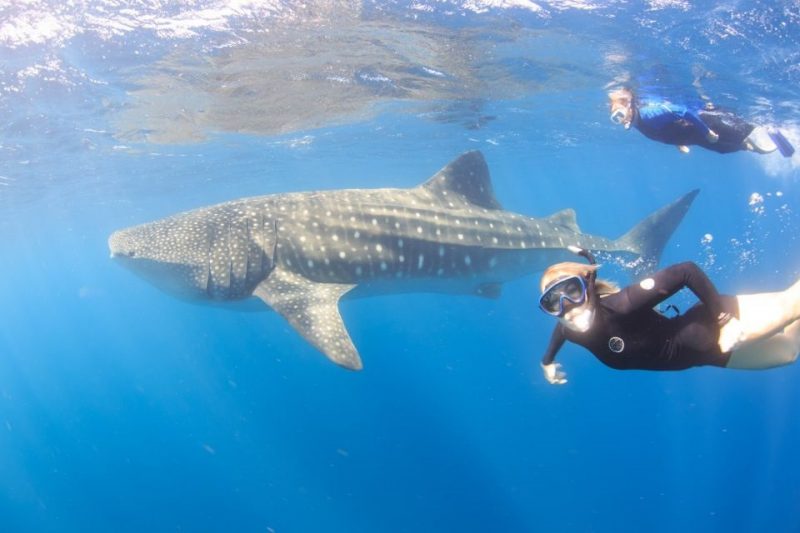
Choosing a reputable tour operator is key to having a successful whale watching experience. Researching and reading reviews from previous customers will give you an idea of the quality of service provided by different operators. Look for tour operators who have experienced guides with extensive knowledge of whales and their habitats.
Booking with an experienced guide has numerous benefits. They can provide valuable information about the whales you encounter, enhancing your understanding and appreciation of these incredible creatures. Additionally, experienced guides prioritize safety and adhere to responsible whale watching practices, ensuring that the well-being of the whales is not compromised.
Experience the best whale watching and swimming with whale sharks tours, rated at the top of their class.
| Location | Description |
|---|---|
| Coral Bay | Opportunity to swim and snorkel with whale sharks at Ningaloo Reef in Coral Bay. |
| Isla Mujeres | Opportunity to swim and snorkel with whale sharks in Isla Mujeres. |
| Pico Island | Boat tour with biologist guides for whale watching in Pico Island. |
| Skjervoy | Guided boat tour for whale watching in Skjervoy, including lunch. |
| Cebu City | Opportunity to swim with whale sharks in Cebu City. |
These tours offer the opportunity to swim and snorkel with whale sharks in various locations around the world, including Ningaloo Reef in Coral Bay, Isla Mujeres, Pico Island, Skjervoy, and Cebu City. Each tour provides a unique experience and may include additional activities such as guided boat tours and lunch.
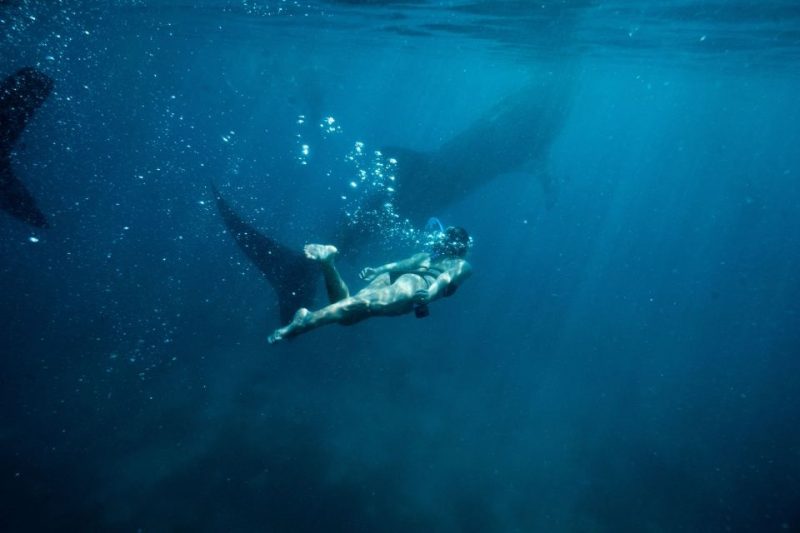
What to Expect on a Whale Watching Tour
A typical whale watching tour usually begins with a briefing from your tour guide, who will provide information about the whales you may encounter and the safety guidelines to follow. Once on the boat, you will embark on a journey to the prime whale watching spots. The tour guide will keep you informed about any whale sightings and provide interesting facts about their behavior and habitat.
Different types of boats are used for whale watching, ranging from small zodiacs to larger catamarans. The choice of boat depends on personal preference and the specific tour operator. Regardless of the type of boat, safety is always a priority, and life jackets are typically provided for all passengers.
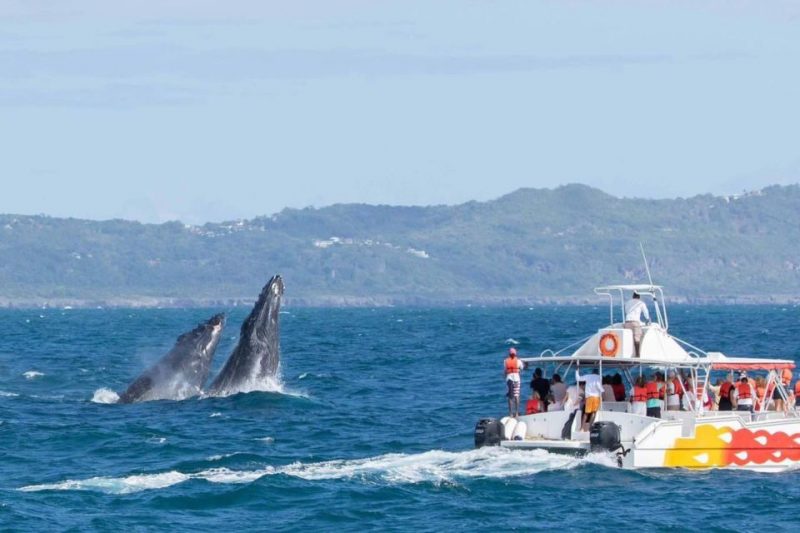
Getting Up Close and Personal with Whales: Techniques for Swimming with Them
When swimming with whales, it is important to approach them in a calm and respectful manner. Sudden movements or loud noises can startle them and disrupt their natural behavior. It is advisable to enter the water quietly and maintain a safe distance from the whales.
Staying calm and relaxed while swimming with whales is crucial. These animals are highly sensitive to human energy, and any signs of fear or aggression can cause them to become defensive or retreat. By remaining calm and non-threatening, you increase the chances of having a peaceful and memorable encounter.
Respecting the whales’ space and behavior is paramount. It is essential to avoid touching or attempting to ride on the backs of these animals. They are wild creatures that deserve our utmost respect and should be observed from a distance that does not disturb their natural behavior.
The Dos and Don’ts of Swimming with Whales
When swimming with whales, it is important to adhere to guidelines that promote responsible and ethical interactions. Firstly, it is crucial to maintain a safe distance from the whales, typically around 100 feet or more. This ensures that you do not disrupt their natural behavior or cause them any distress.
Avoid making sudden movements or loud noises that may startle the whales. It is important to approach them slowly and quietly, allowing them to become accustomed to your presence. Additionally, it is advisable to avoid swimming directly in front of or behind the whales, as this may be perceived as a threat.
Disturbing or harming whales can have serious consequences. It is essential to remember that these animals are protected by laws and regulations in many countries. Violating these laws can result in fines or even imprisonment. By respecting the whales and their environment, we can contribute to their conservation and ensure their continued existence for future generations.
The Ethics of Whale Watching: Respecting the Whales and Their Habitat
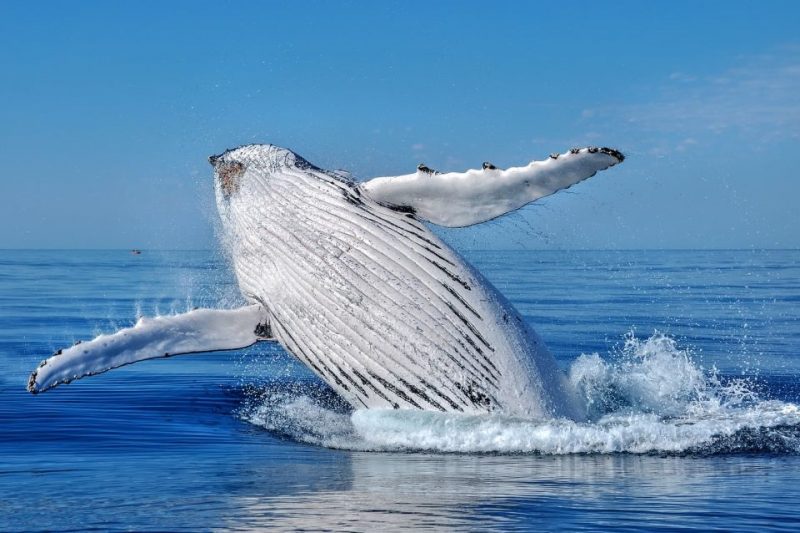
Whale populations around the world have been significantly impacted by human activity. Overfishing, pollution, and climate change have all contributed to the decline of whale populations. Responsible whale watching practices are essential in minimizing our impact on these magnificent creatures and their habitats.
Responsible whale watching involves maintaining a safe distance from the whales, avoiding any actions that may disturb or harm them, and adhering to local regulations and guidelines. It is also important to choose tour operators who prioritize the well-being of the whales and actively contribute to their conservation efforts.
By practicing responsible whale watching, we can help raise awareness about the importance of protecting these animals and their habitats. Through education and conservation efforts, we can ensure that future generations will have the opportunity to experience the wonder of swimming with whales.
Capturing Your Whale Watching Experience: Photography and Videography Tips
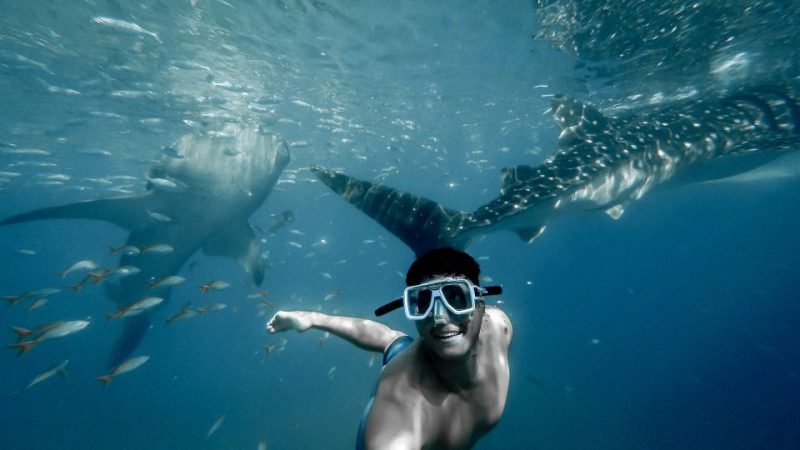
Capturing the beauty and majesty of whales through photography and videography is a wonderful way to share your experience with others. When photographing or filming whales, it is important to respect their space and behavior.
To capture great photos and videos of whales, it is advisable to use a telephoto lens or zoom function to get close-up shots without disturbing the animals. It is also important to have a fast shutter speed to freeze the motion of the whales as they breach or swim. Experimenting with different angles and compositions can result in unique and captivating images.
Sharing your whale watching experience with others can help raise awareness about the importance of protecting these incredible creatures. By posting your photos and videos on social media or sharing them with friends and family, you can inspire others to appreciate and respect whales and their habitats.
Other Activities to Enjoy While Whale Watching
While whale watching is undoubtedly the highlight of any trip, there are often other activities and attractions to enjoy in the surrounding area. Many whale watching destinations offer additional wildlife and nature experiences, such as bird watching or snorkeling with marine life. Exploring local cultural and historical attractions can also provide a deeper understanding of the region you are visiting.
Extending your trip and making the most of your time in the area is highly recommended. Whether it’s hiking through scenic landscapes, visiting local markets, or indulging in delicious cuisine, there are countless opportunities to immerse yourself in the culture and natural beauty of your chosen destination.
FAQs
What is whale watching?
Whale watching is the activity of observing whales and other cetaceans in their natural habitat. It is a popular tourist attraction in many coastal areas around the world.
What are the best places for whale watching?
The best places for whale watching are areas where whales are known to migrate or feed. Some popular destinations include Alaska, Hawaii, Iceland, Norway, and South Africa.
What types of whales can be seen during whale watching?
The types of whales that can be seen during whale watching vary depending on the location. Some common species include humpback whales, gray whales, blue whales, orcas, and beluga whales.
Is it safe to swim with whales?
Swimming with whales can be dangerous and is not recommended. Whales are wild animals and can be unpredictable. It is important to respect their space and observe them from a safe distance.
What should I bring on a whale watching tour?
It is recommended to bring warm clothing, sunscreen, a hat, sunglasses, and a camera. Some tours may provide binoculars or other equipment.
What is the best time of year for whale watching?
The best time of year for whale watching varies depending on the location and the species of whale. In general, whales can be seen during their migration or feeding seasons. It is best to research the specific location and species before planning a trip.
Making Your Dream of Swimming with Whales a Reality
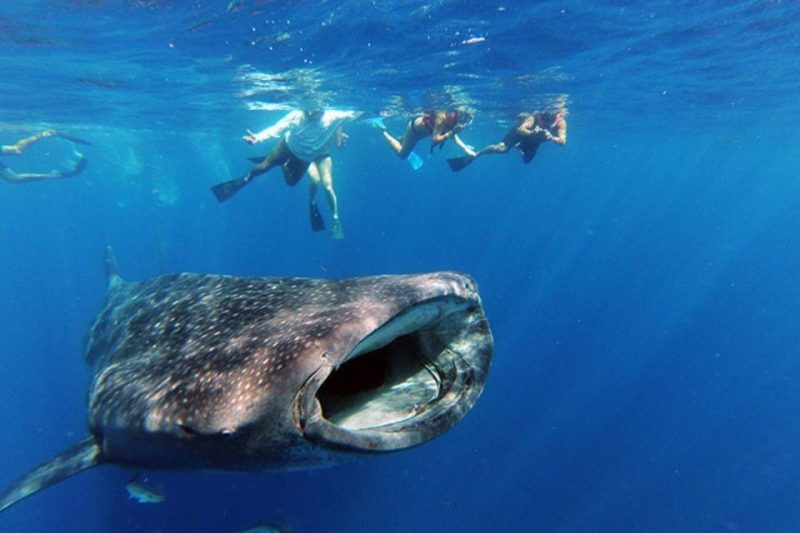
Swimming with whales is a dream for many people, but with proper planning and preparation, it can become a reality. By understanding the different types of whales, choosing the right time and place for whale watching, and following safety guidelines, you can have a safe and unforgettable experience.
Responsible whale watching practices are essential in ensuring the well-being of these incredible creatures. By respecting their space and behavior, we can contribute to their conservation and help protect their habitats for future generations.
Immerse yourself in the wonder of these majestic creatures, and let their beauty and grace leave an indelible mark on your soul. So, take the leap and make your dream of swimming with whales a reality.




Be the first to comment